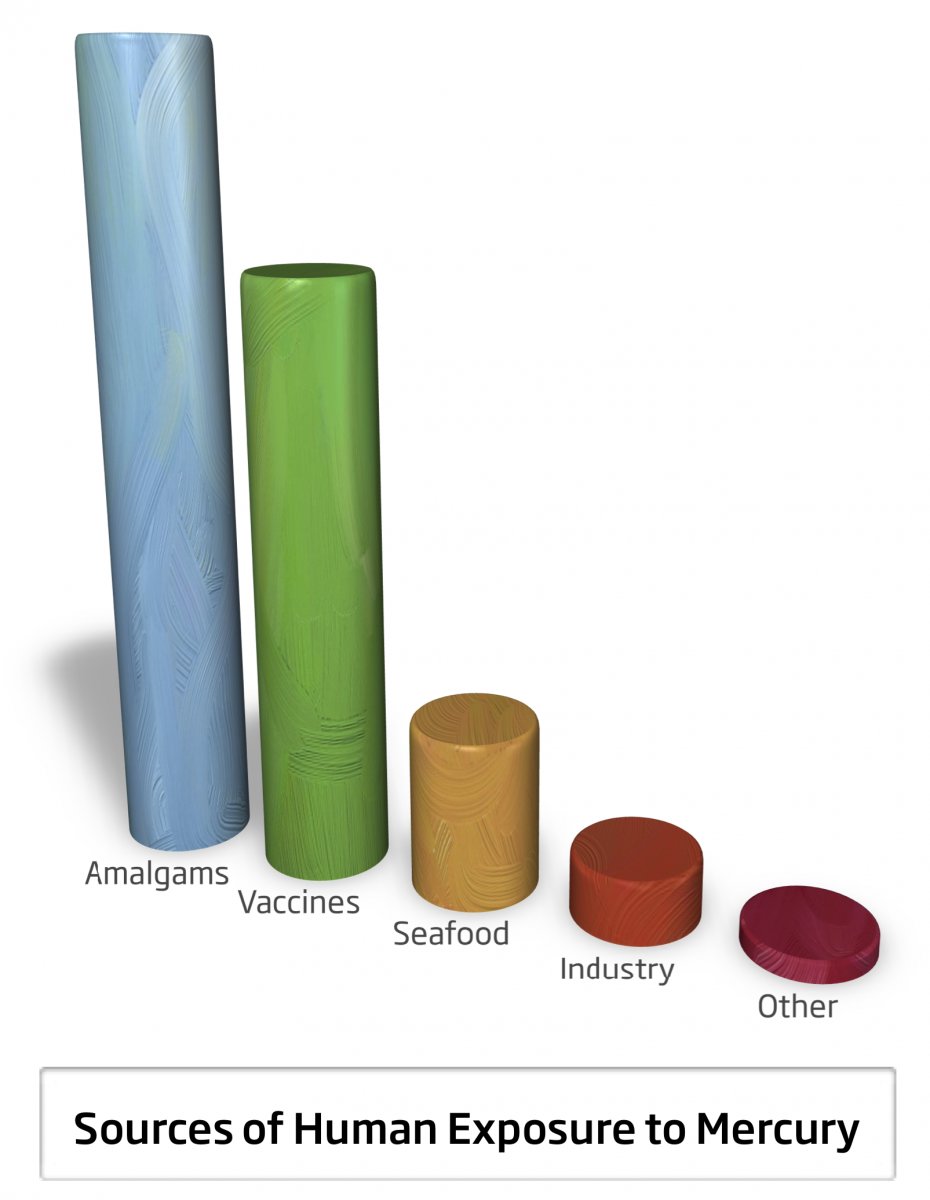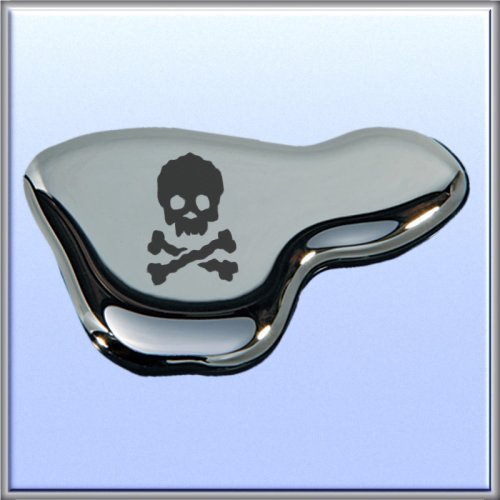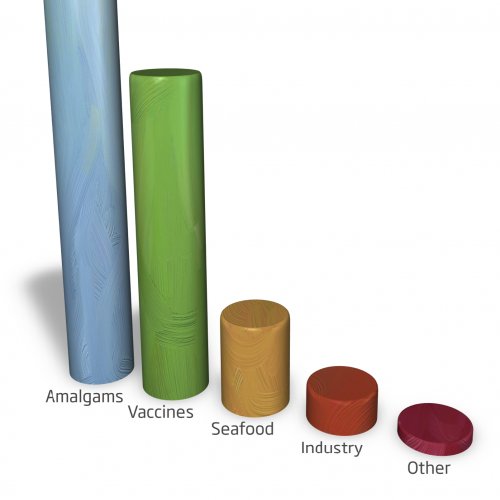
Mercury has insidiously crept up on us as a society. Once we began burning fossil fuels and releasing mercury into the environment, the human accumulation began. Mercury has unique properties and useful reactivity in industry. Therefore, we even began using it as an ingredient in makeup, eye solutions, paint, fabrics (velvet), disinfectants, vaccines, even "food" such as high-fructose corn syrup which is found in ketchup, sweets, beer, and sodas.
One unique biological quality of mercury is that in the body, it blocks its own removal. And then it blocks the removal of other toxins because it blocks detox pathways. Thus, for many people, mercury goes in but never comes out. And every other toxin starts to accumulate too, and things just spiral out of control because it all builds and builds in the individual. But it also transfers and builds generation to generation because mercury gets stored in the uterus and placenta and passes in large amounts from mother to child (even a little bit from father to child).
It seems, in the past five generations or so, the mercury burden in society has been increasing. For example, our grandparents had much less mercury in their systems than we do today. This is one main reason why chronic disease has been on the rise. Although mercury is harmful in any amount — even a single atom of mercury is toxic — there seems to be a threshold beyond which signs become easily recognizable such as autism, other neurological conditions, or hundreds of other conditions. This threshold differs based on genetics, epigenetics, nutrition, and other toxic or environmental factors.
Another insidious quality of mercury is that it's so difficult to test for. Mercury doesn't normally stay in the blood, doesn't come out in the urine, and isn't predictably excreted in the hair. To accurately determine mercury levels, a tissue sample needs to be taken and studied. Since mercury is mostly stored in organs (especially the brain), this method of testing is obviously not feasible. Luckily, there are some tests that can crudely estimate levels of mercury such as a hair mineral analysis or a porphyrins test (blood or urine), but none of these methods are directly able to measure the amount of mercury toxicity, or sometimes even detect mercury at all. (A provoked test, in case you've heard about it, is dangerous because it stirs up mercury and redistributes it around the body.) Still, these tests are used as the best methods we have today. It's important to understand that the body sequesters (hides) mercury so effectively that even a blood test almost never shows the presence of mercury, yet so many doctors rely on this false test and come to the erroneous conclusion that there is no mercury toxicity issue.
Because symptoms can be vague and inconsistent, and because testing is unreliable, mercury toxicity is not recognized by mainstream medicine. In fact, the FDA has claimed that there are "no mercury toxic people in this country," therefore concluding that reliable testing and treatment is not necessary. This sets the stage for medical oblivion and the ensuing mercury crisis. Therefore to understand and treat mercury toxicity, we must go outside the box and turn to alternative health practices.

Mercury toxicity is horrible. I see the dramatic and debilitating effects every single day. Of course not everyone has glaring mercury symptoms, but a large portion of people with amalgams have very obvious and dramatic mercury toxicity symptoms. Knowing that the greatest source of human exposure to mercury comes from dentistry means our obligation as dentists is extremely important and yet goes largely unrecognized. Bringing awareness to the mercury toxicity epidemic and learning to treat it is so critical that I believe humanity's well-being depends on it.

Categories: Toxins





